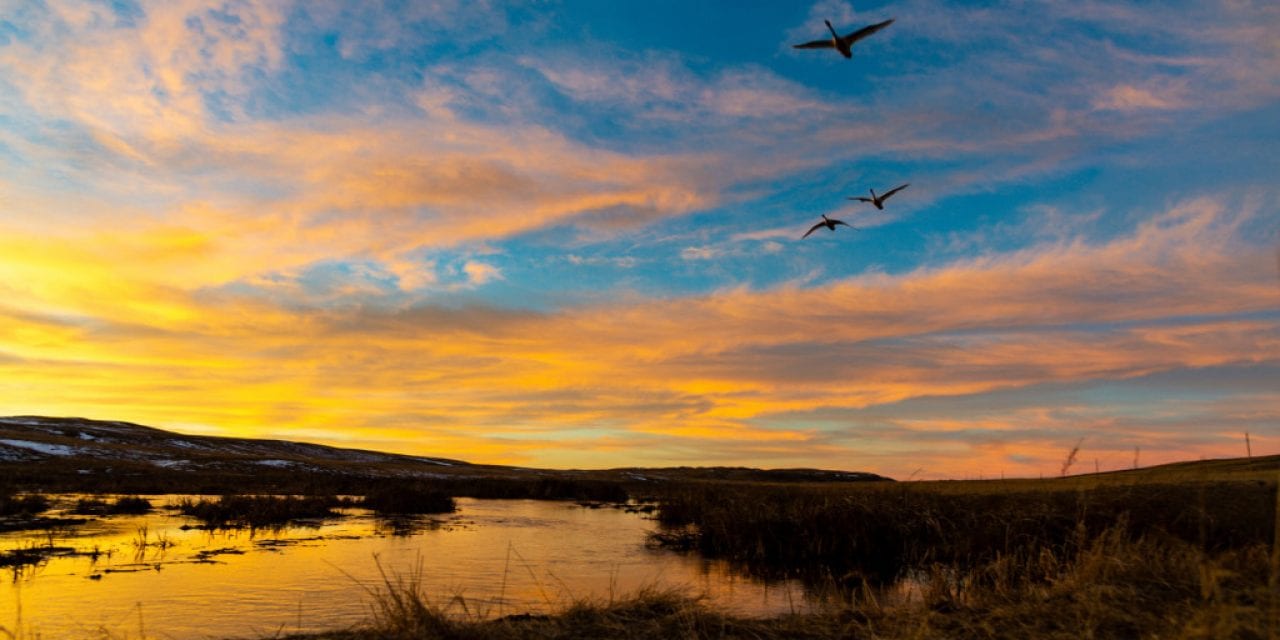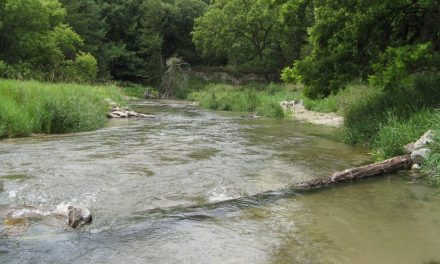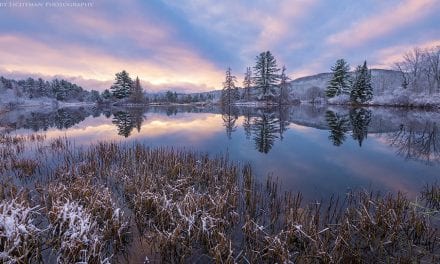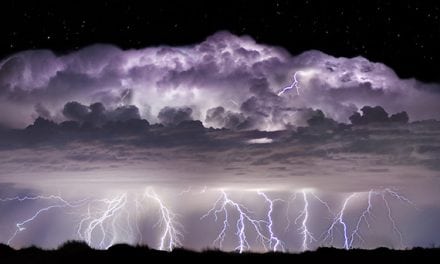Enlarge
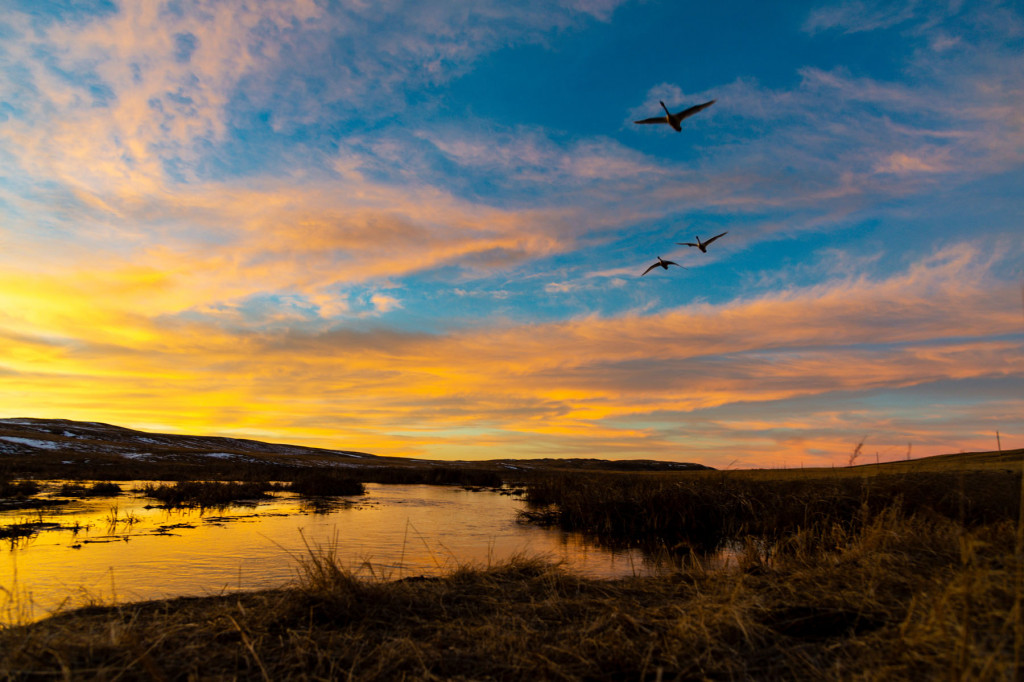
Story by Mark Vrtiska and Photos by Eric Fowler
The marsh had a lot more cattails and bulrushes than most Sandhills lakes, concealing the trumpeter swans we were after. The swans themselves were doing their best to hide by swimming in a different direction than the large and loud airboat zigzagging through the marsh. So, when we burst through a wall of vegetation, and there were four swans right in front of us – two adults and two young, known as cygnets – we were not sure who was more surprised, us or the swans. The action instantly intensified as the swans scattered, and we gunned the airboat and swung around to pursue one of the adults. The big male, as it turned out, was already in the process of wing molt; having lost the last of his loose wing feathers, and unable to fly, he lunged for the protection of the vegetation. I managed to get the large hoop net over his head and rolled him up in the rest of the net. We had our swan.
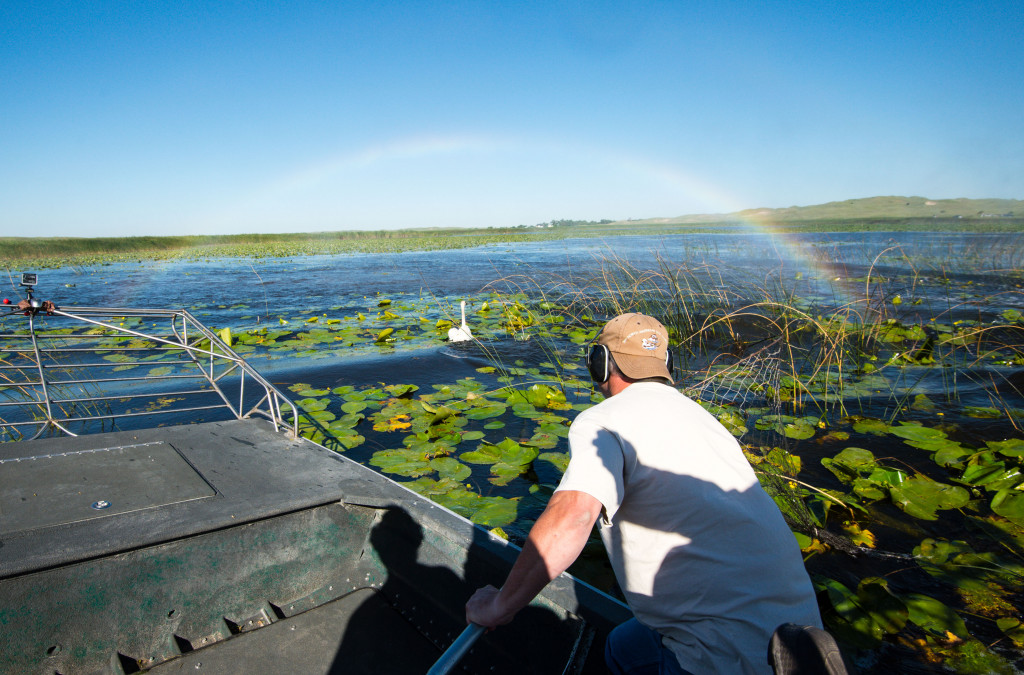
We were after these swans to study their movements and fidelity in the Sandhills – their faithfulness to return to the same wintering and breeding areas each year. To help identify and direct conservation actions for these birds and their habitats, these studies are critical to help us better understand where and when these birds move about the landscape. For the most part, we found these trumpeter swans neither left Nebraska nor traveled far from the Sandhills.
Additionally, basic information on Sandhills trumpeters, such as nesting and hatching success and cygnet survival, was lacking. Aerial surveys indicate that while the Sandhills population was growing, the number of cygnets produced each year was declining. Therefore, locating swan nests was the other part of this study. We needed to determine how many nests resulted in eggs being laid, how many eggs hatched and how many cygnets made it to flight stage.
Capturing, collaring and following these birds would help us answer these questions.
Biology and Background
Trumpeter swans are the largest of waterfowl, and even claim the title of largest native bird in North America. Males, also known as cobs, typically weigh between 24 and 28 pounds and stand about 4 feet tall, with females being only slightly smaller. Their corresponding wingspan is also large, reaching up to 8 feet. Trumpeters are solid white except for their bills and feet. Cygnets have grayish plumage, which they keep for a year. On rare occasions, cygnets will display white plumage similar to their parents.
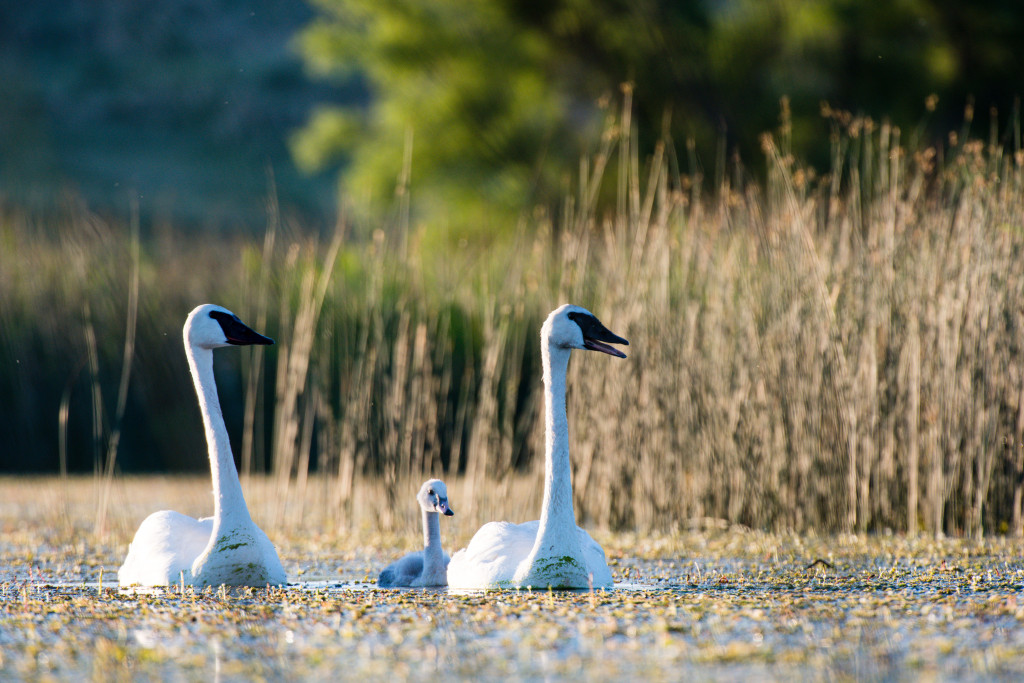
Trumpeters can be distinguished from their close cousins, the tundra swan, by having a totally black bill, with a little pink or red on the bottom jaw. Tundra swans have a yellow marking at the base of their bill, just in front of the eye. Non-native mute swans have pinkish bills and a distinctive head shape, with a bulging knob at the base of the beak.
Swans are long-lived and known to have reached age 24 in the wild and age 33 in captivity. They will pair for life, but most will obtain another mate if one perishes. They don’t breed until they are 3 to 6 years old. Their nest sites are located overwater and typically start with muskrat huts on which adults build the nesting structure. Swans are quite territorial and only on the largest lakes or marshes will there be more than one pair nesting. Despite being big white birds, they are adept at hiding themselves and their nesting sites among the cattails and bulrushes.
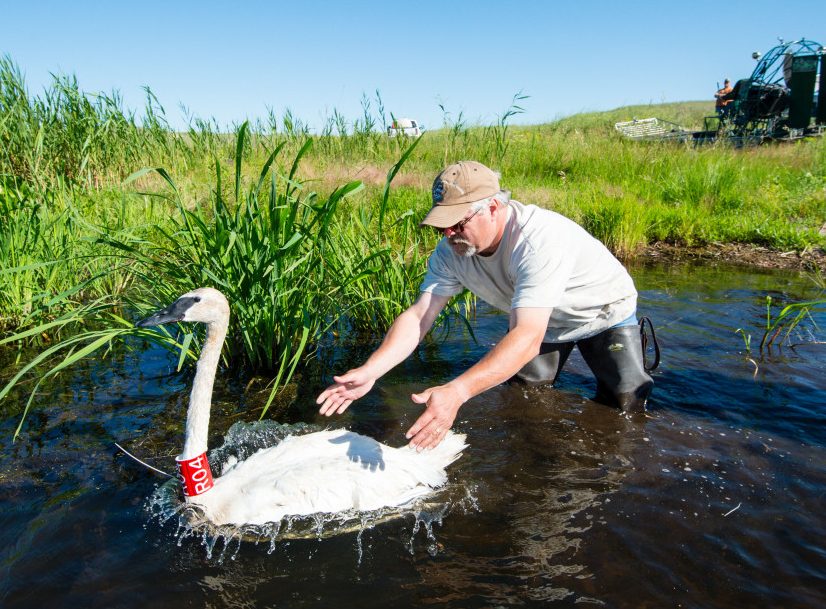
Females will lay 4 to 6 eggs during late April or early May and incubate them for about 35 days. It takes cygnets more than 100 days to grow feathers and attain flight. During this period, adults will undergo a wing molt, rendering them flightless.
Trumpeter swans were nearly extirpated from North America by the end of the 19th century. Euro-American settlers hunted them for food and market hunters targeted them for fashion and supplies: soft swanskins were turned into powder puffs, quills were made into ink pens and feathers adorned hats. By the time the Migratory Bird Treaty Act was passed in 1918, giving swans protection, only remnant populations remained. Yet the decline continued. The last record of a swan in Nebraska came from Holt County in 1928. By 1932, only 69 swans were known to exist in the lower 48 states, with all of those found in remote locations around Yellowstone National Park. Others were later found in remote parts of Canada and Alaska.
From those remnant populations in the Greater Yellowstone area, trumpeter swans were reintroduced into other western states beginning in the 1930s and 1940s. That work resumed in the early 1960s, when 57 cygnets were placed at LaCreek National Wildlife Refuge near Martin, South Dakota, a short distance from the Nebraska border, north of Merriman. The swans flourished and soon found their way into the Sandhills. In 1964, the first cygnets hatched at Cody Lake near Cody.
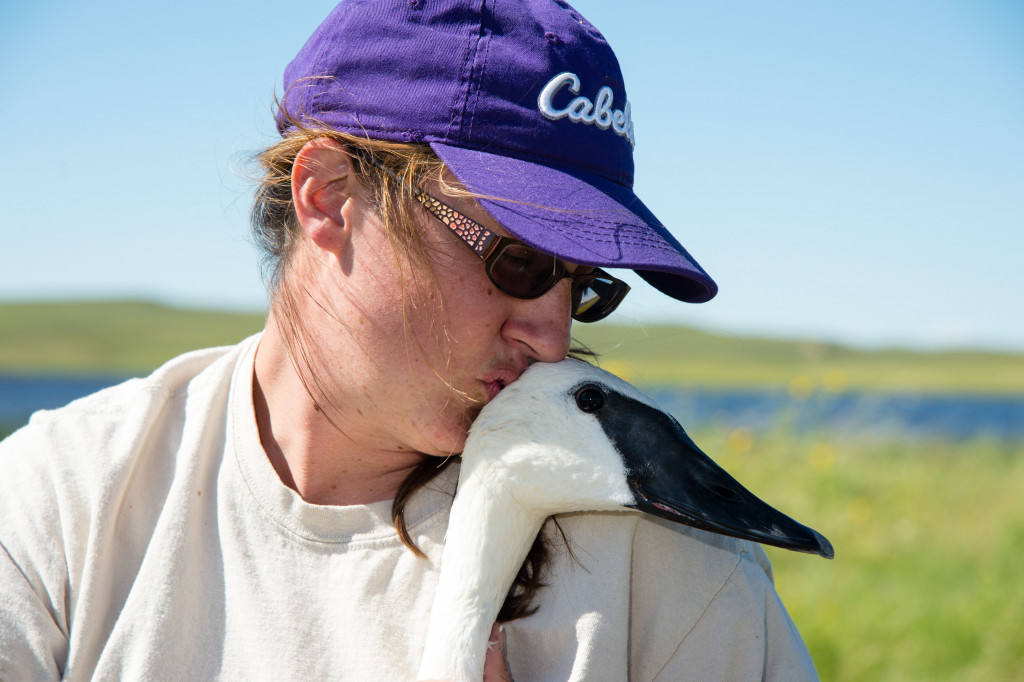
The Sandhills is a perfect area for trumpeter swans, as a number of its lakes, marshes and rivers have excellent water quality and are full of submerged vegetation, their primary food. From those first nesting birds, the population has fanned out across the Sandhills, with recent winter surveys counting about 1,000 birds. Even though their status has improved greatly over the years, they are still considered a Tier 2 species in the Nebraska Natural Legacy Plan. Tier 2 species are typically not at-risk from a global or national perspective, but are rare or imperiled within Nebraska. In the case of swans, their limited range puts them at risk.
Restoration efforts in other parts of the United States and Canada have also been successful, with an estimated 70,000 swans now found throughout their range. The success can be seen in eastern Nebraska, where an increasing number of swans from restored populations in Iowa and Minnesota now winter.
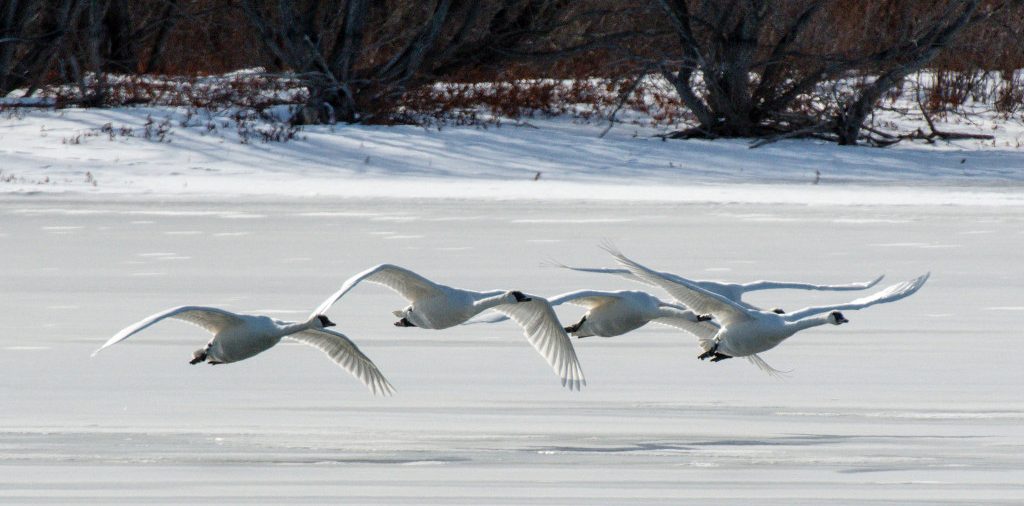
Swan Movements
Lucky for us, trumpeters are docile when captured. In fact, they’ve proven to be the most docile waterfowl species we’ve ever had the pleasure to handle. If these birds reacted in similar fashion to the Canada geese we band, we would’ve needed a medic when capturing and handling them. Even so, when swans have lunged in an attempt to escape, the big claws on their huge feet have easily slashed holes in waders and hip boots.
From 2014 to 2018, we captured 37 trumpeter swans in Cherry, Arthur, Grant and Sheridan counties. Each swan was fitted with a red neck collar with a unique code to identify the bird. Also attached to that neck collar was a solar-powered GPS transmitter that provided us with accurate locations of where and when this bird went for the next 2 to 3 years. Given the lack of roads in the Sandhills, the ability to track these birds without having to physically find them was critical. Additionally, we were not sure how far these birds would move once their breeding marshes froze over.
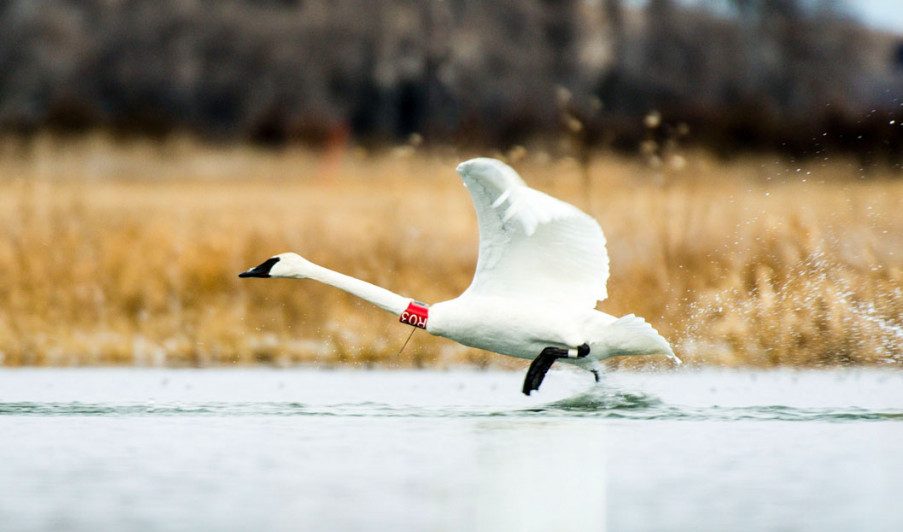
The collared swans provided us with a few surprises. One bird spent part of a winter along the Kansas/Oklahoma border southeast of Dodge City, Kansas. This area is not known as a mecca for wintering waterfowl. However, summer and fall rains provided plenty of water, and this male was thought to be a 2- to 3-year old adult that may have just wandered around for a while. A couple of swans also led us to wintering areas we were not aware of from our aerial surveys – one swan used the Platte River. The vast majority of marked birds stayed and wintered on the rivers and creeks in the Sandhills. None of our marked swans went farther east than Calamus Reservoir near Burwell, but that may be more of a reflection of where we captured the birds than their behavior.
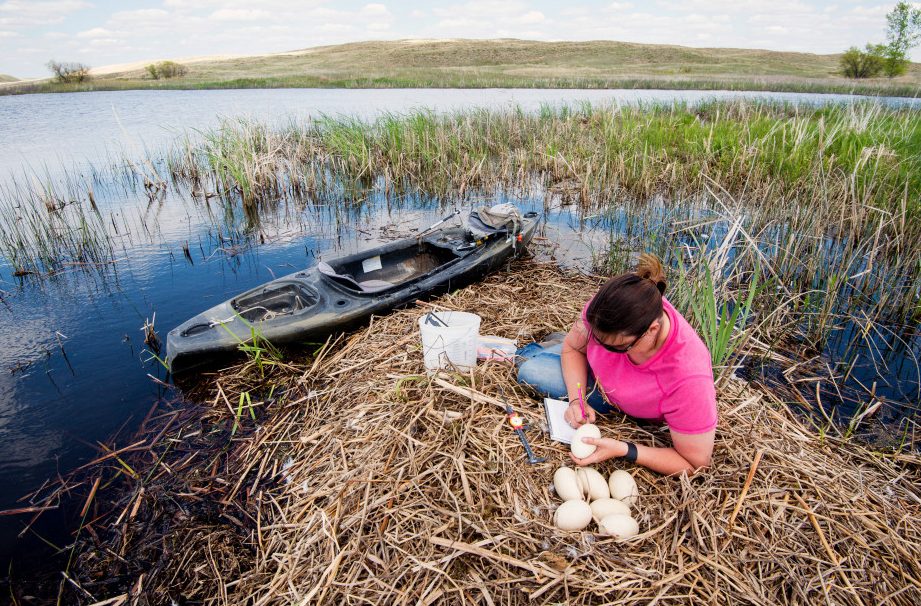
We also saw swans move to a wintering area, and then, during a warm spell, go back to their breeding marshes for a brief period. Once weather turned cold again and the lakes froze over, they returned to their wintering area. As we anticipated, most swans were faithful in returning to the same breeding and wintering areas each year. There were some departures, with some swans using different river systems during the same winter. While a few birds went south for the winter, most passed on that seasonal migration. Some actually traveled north, and some went more east than south. Some also bypassed the wintering area closest to their breeding marshes.
Swan Nesting
In conjunction with the movement study, we began assessing how well trumpeter swans were reproducing in the Sandhills in 2016 and 2017. Aerial surveys helped us find a number of nesting pairs, and observations by Game and Parks staff, U.S. Fish and Wildlife Service staff at the Valentine National Refuge, and tips from local landowners and other interested parties helped us find more.
Once a nest was found, Heather Johnson, who led the field work on this part of the study, used a kayak to visit and study the nest. Eggs were numbered and floated – a technique to age the stage of incubation – as quickly as possible to allow the female back on the nest. After the anticipated hatch date, or when the pair was observed with cygnets, Johnson returned to the nest to determine how many eggs had actually hatched. Pairs and cygnets were observed until late summer, just prior to when they were able to fly, to determine how many cygnets survived.
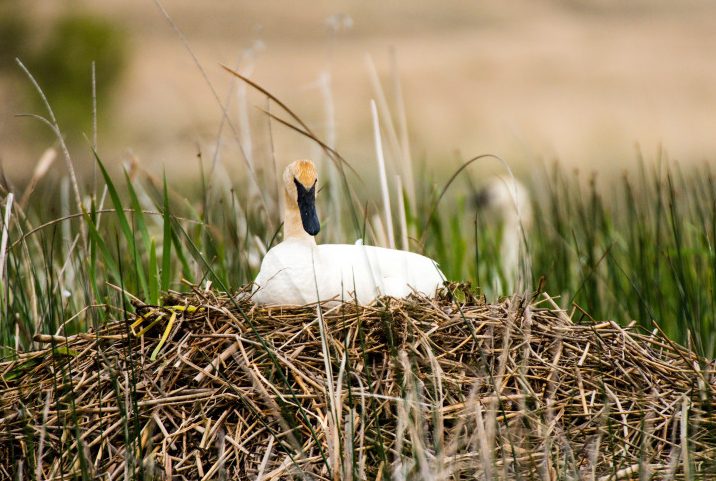
The study found that 92 percent of the nests we monitored were successful, hatching at least one egg, and that a little more than 70 percent of the eggs laid hatched. Both of these numbers match the high end of success rates found in studies from other parts of North America. However, where we found the biggest discrepancy between trumpeter swans in the Sandhills and other populations was in cygnet survival. Only about 40 percent of cygnets survived to flight stage, compared to 70 to 85 percent elsewhere. The biggest difference was that in lakes with largemouth bass and northern pike, cygnet survival was much lower than in lakes without those aquatic predators. Despite cygnet survival rates being lower than in other populations, the swan population continues to grow in the Nebraska Sandhills.
The Future
The Sandhills is a unique place in North America and, indeed, the world. One aspect of its uniqueness is that it is relatively undisturbed compared to other habitats. But that may change. Swans need water throughout their life cycle, and water demand will only increase in the future, a fact that already has some looking at ways to move water from the Sandhills elsewhere. Climate change could also affect water in the region. Other threats to swans include the development of wind and other energy sources, and the corresponding transmission lines may alter where swans can or want to go.
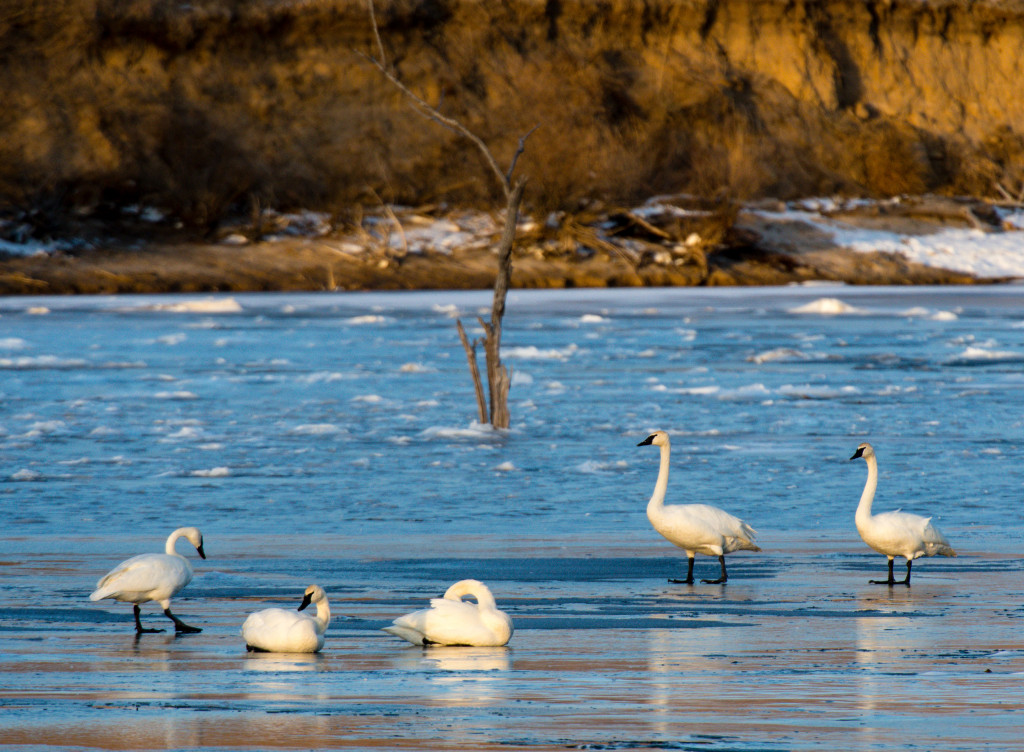
One thing is certain, though. The beauty and calm splendor of trumpeter swans in this unique region will remain. As a biologist, one reward is the observations that few others get to have. We had the fortune to watch a cygnet take its first swim with its father, while the mother stayed behind to continue to incubate the remaining unhatched eggs. The cob waited patiently as the cygnet carefully, yet clumsily, made its way down the large muskrat house from his nest. Once it reached the water, the cob started out swimming slowly, letting the cygnet get used to the cool water and figure out how to navigate it. Within minutes, both cob and cygnet set out exploring the lake.
It is also comforting to know that thanks to the efforts of ranchers, landowners, conservation agencies and the public, trumpeter swans will continue to thrive in the Sandhills for generations to come. ■
Heather Johnson did much of the field work for this study and contributed to this story. We would also like to thank the landowners who allowed us access; Game and Parks biologists Al Hansen, Tom Krolikowski and Zac Brashears; technicians and other individuals for their help; and Letitia Reichart at the University of Nebraska at Kearney.
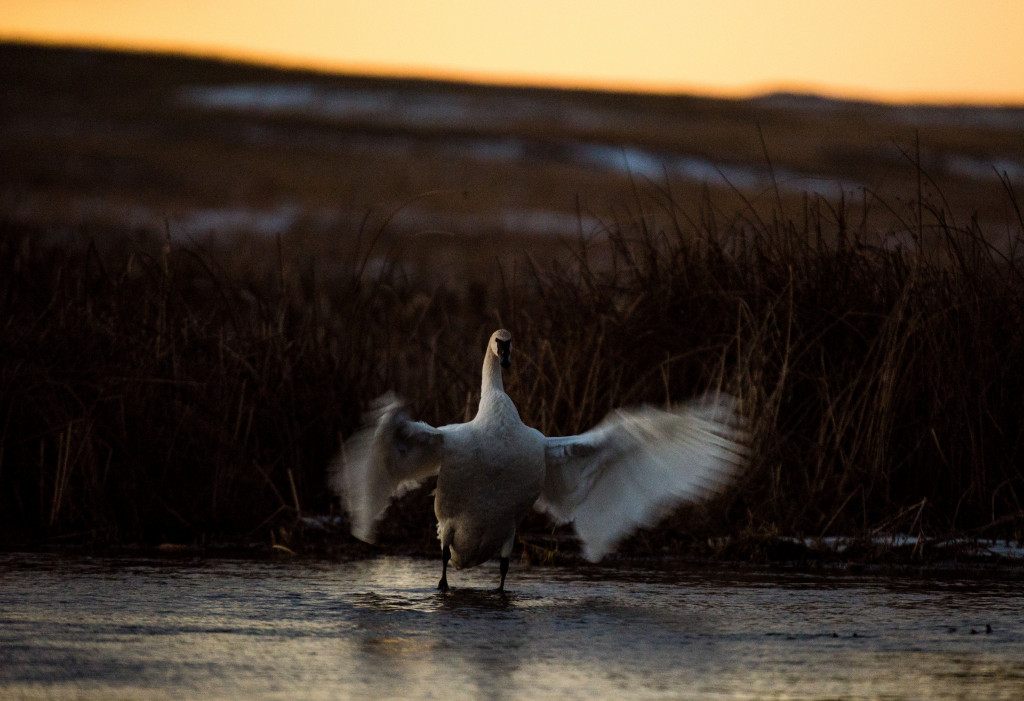
The post Sandhills Trumpeters appeared first on Nebraskaland Magazine.

